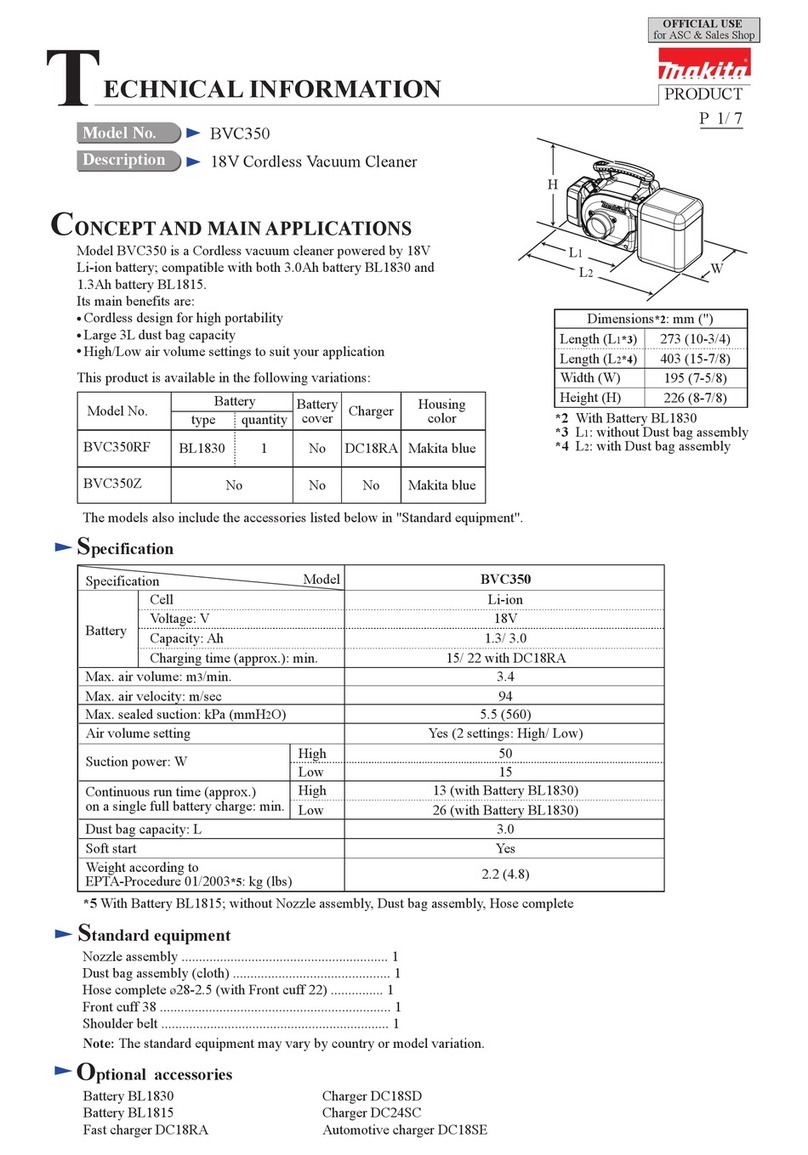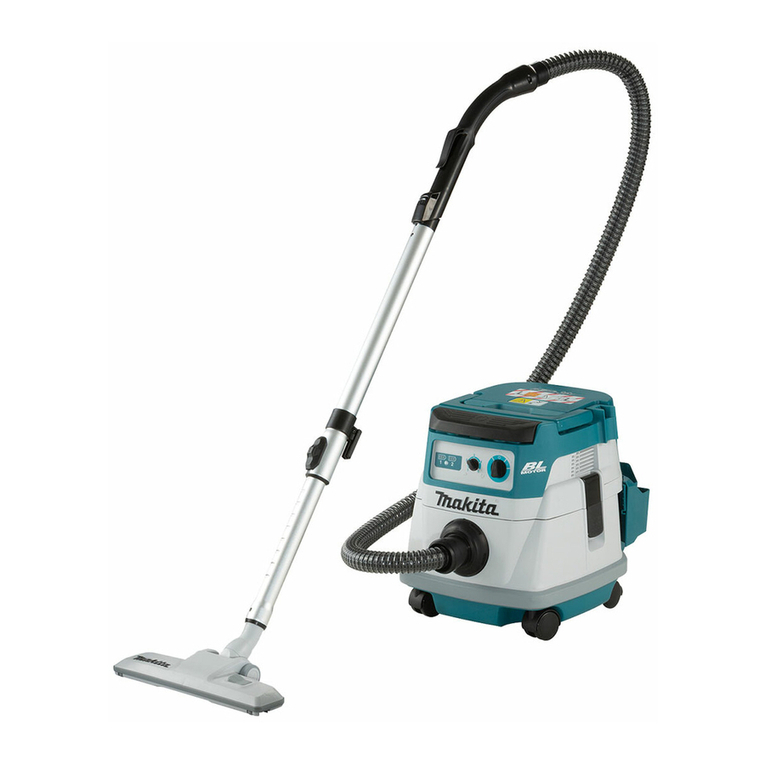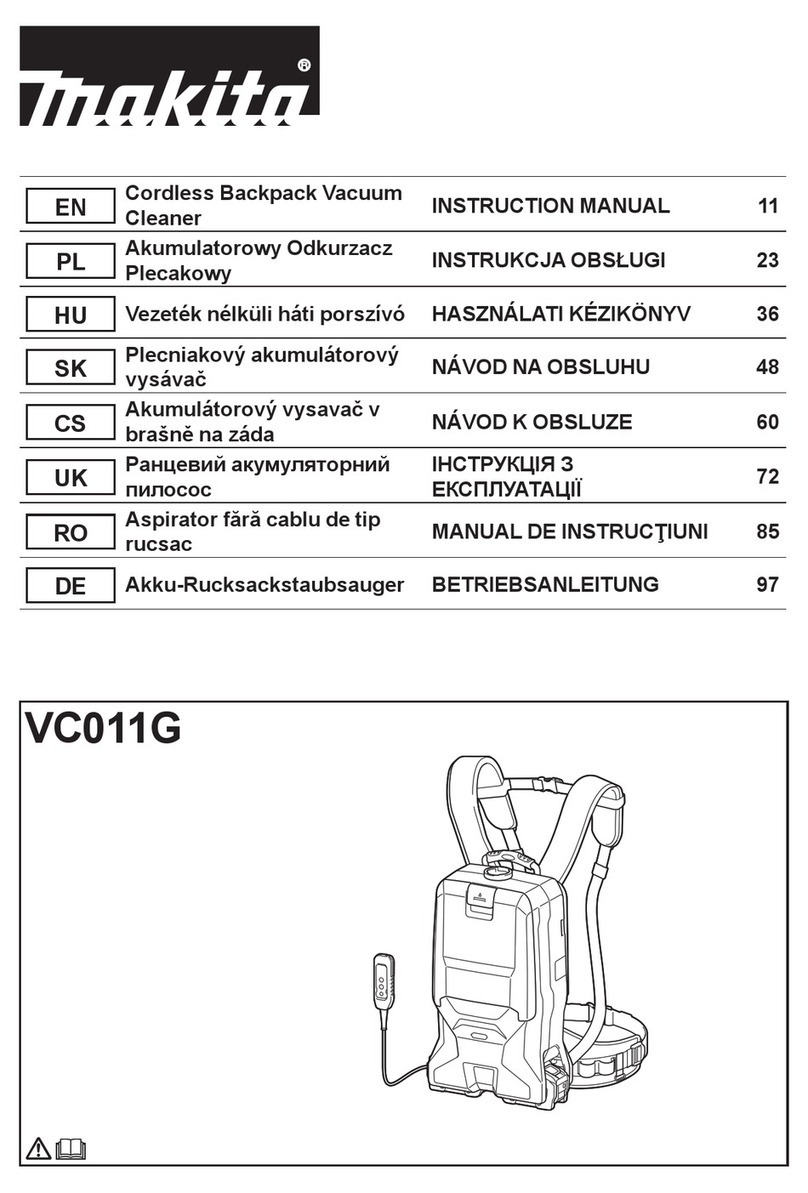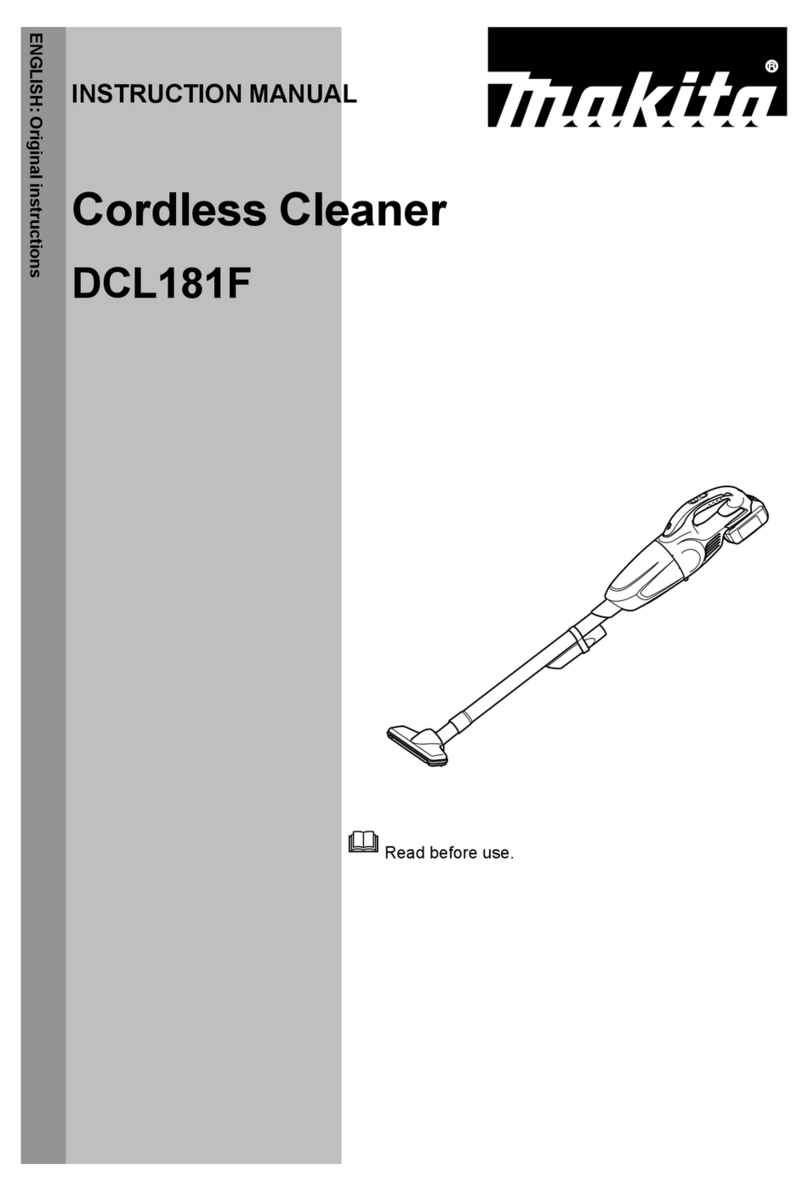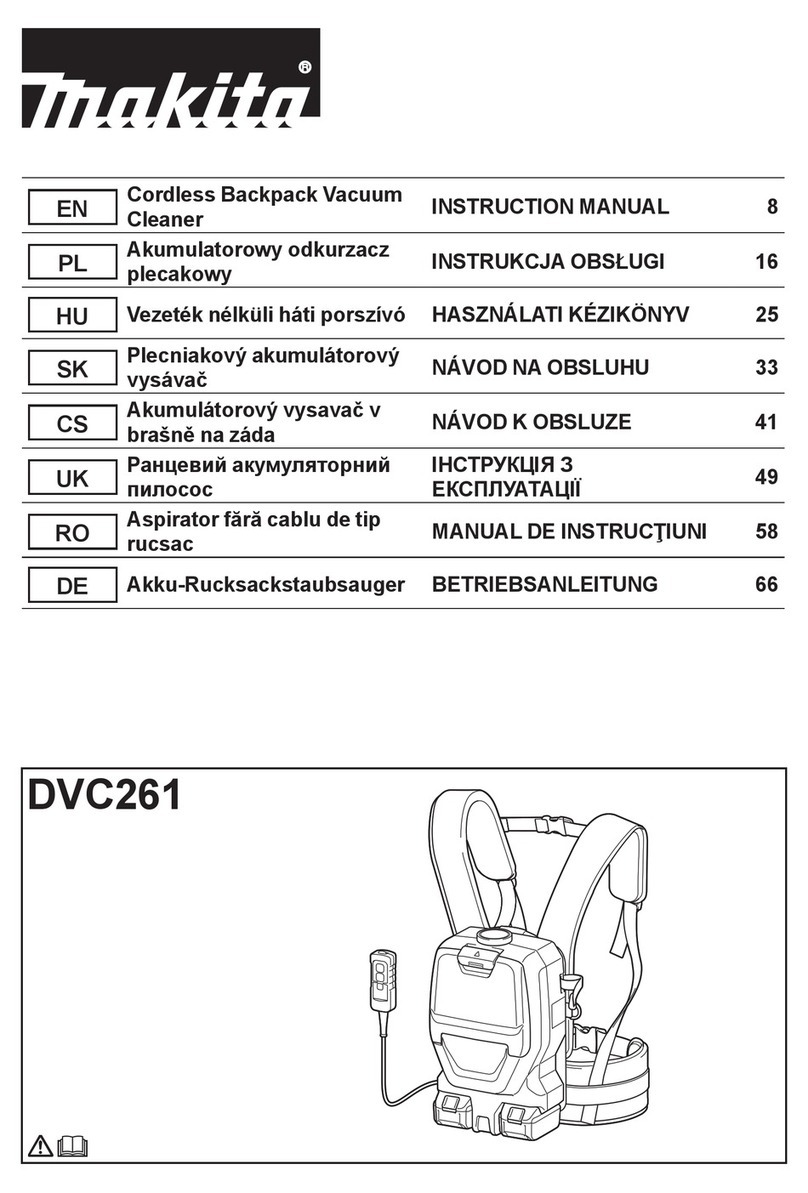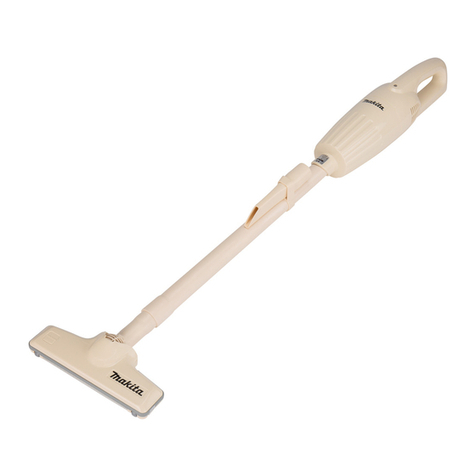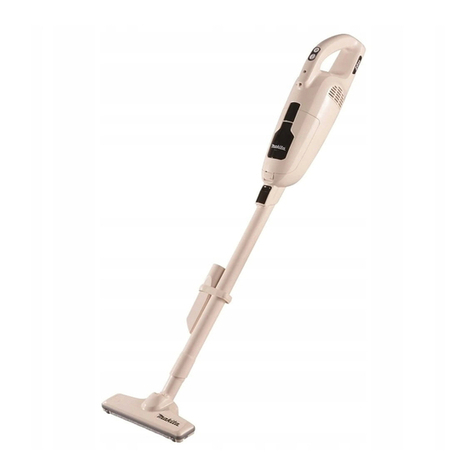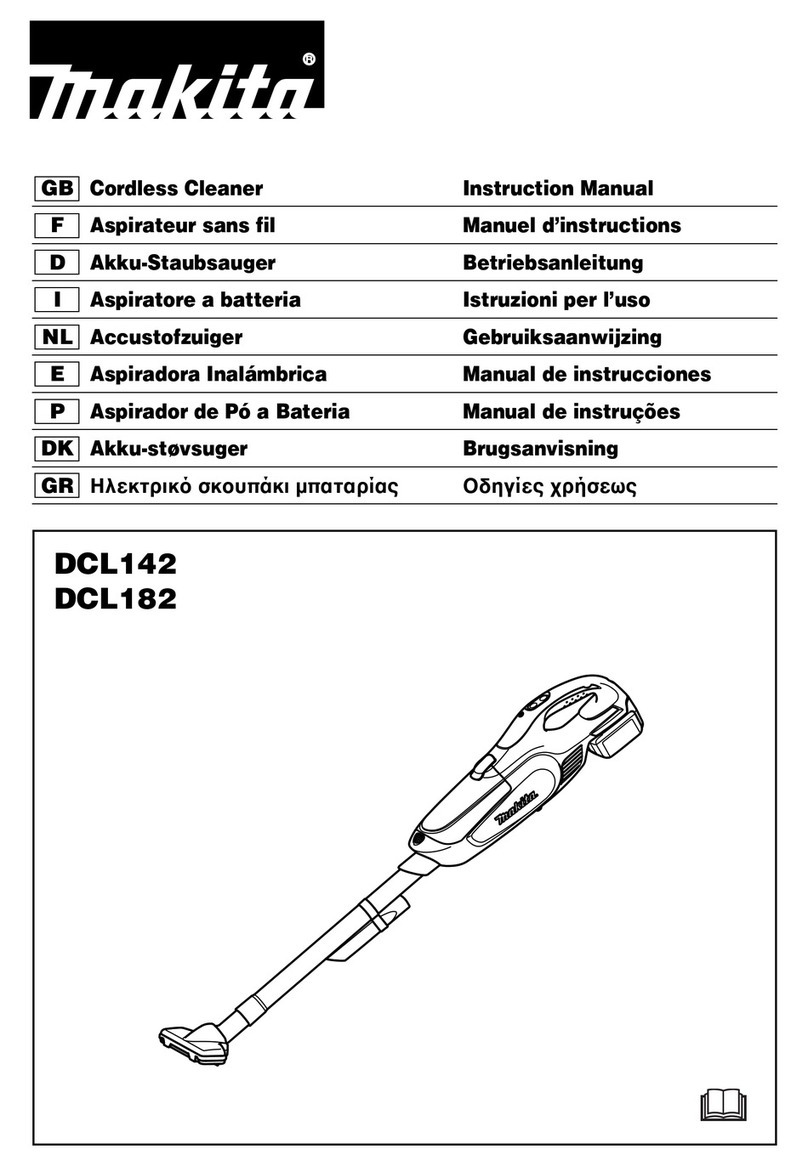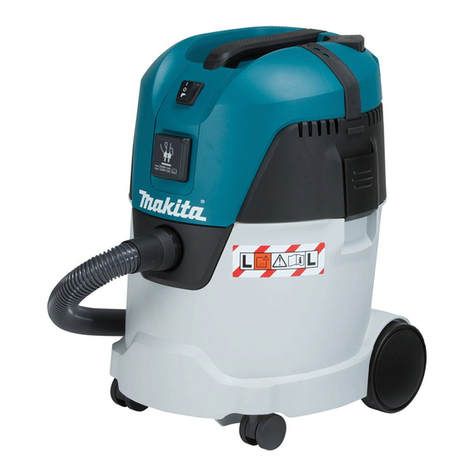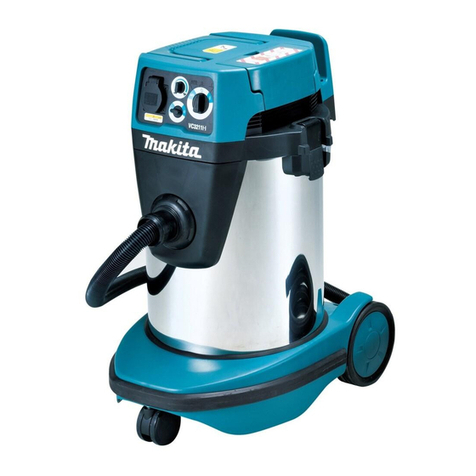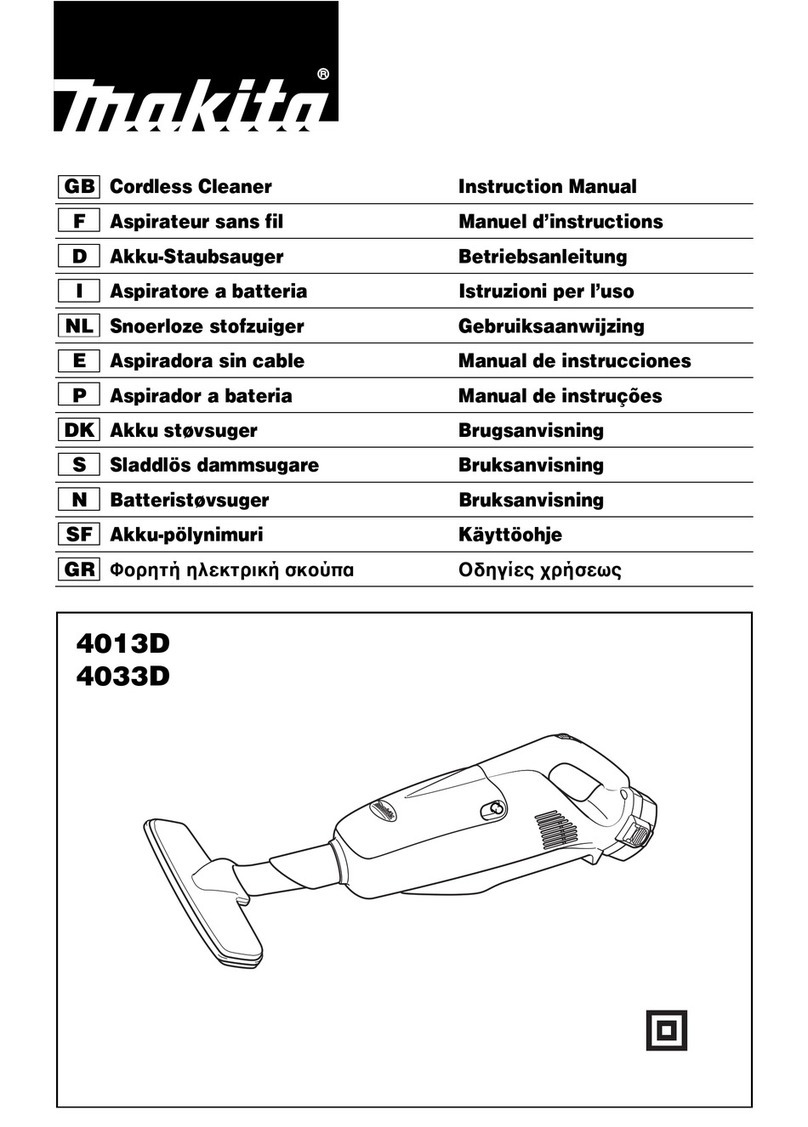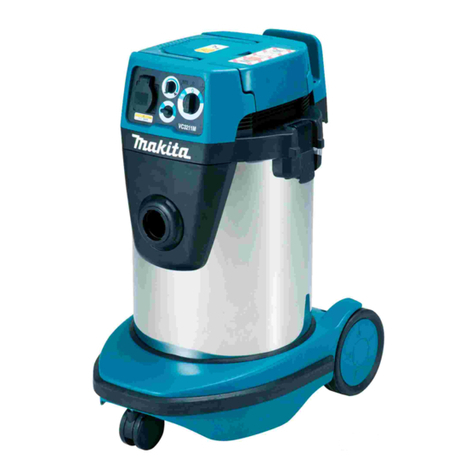
7
11. Never vacuum up toxic, carcinogenic,
combustible or other hazardous materials
such as asbestos, arsenic, barium, beryllium,
lead, pesticides, or other health endangering
materials.
12. Never use the cleaner outdoors in the rain.
13. Do not use close to heat sources (stoves, etc.).
14. GUARD AGAINST ELECTRIC SHOCK. Prevent
body contact with grounded surfaces. For
example; pipes, radiators, ranges, refrigerator
enclosures.
15. Do not block cooling vents. These vents
permit cooling of the motor. Blockage should
be carefully avoided otherwise the motor will
burn out from lack of ventilation.
16. Keep proper footing and balance at all times.
17. DO NOT ABUSE CORD. Never carry the
cleaner by cord or yank it to disconnect from
receptacle. Keep cord away from heat, oil, and
sharp edges. Inspect cleaner cords
periodically and if damaged, have repaired by
authorized service facility. Inspect extension
cords periodically and replace if damaged.
18. Do not fold, tug or step on the hose.
19. Stop the cleaner immediately if you notice
poor performance or anything abnormal
during operation.
20. DISCONNECT THE CLEANER. When not in
use, before servicing, and when changing
accessories.
21. Clean and service the cleaner immediately
after each use to keep it in tiptop operating
condition.
22. MAINTAIN THE CLEANER WITH CARE. Keep
the cleaner clean for better and safer
performance. Follow instructions for
changing accessories. Keep handles dry,
clean, and free from oil and grease.
23. CHECK DAMAGED PARTS. Before further use
of the cleaner, a guard or other part that is
damaged should be carefully checked to
determine that it will operate properly and
perform its intended function. Check for
alignment of moving parts, binding of moving
parts, breakage of parts, mounting, and any
other conditions that may affect its operation.
A guard or other part that is damaged should
be properly repaired or replaced by an
authorized service center unless otherwise
indicated elsewhere in this instruction manual.
Have defective switches replaced by
authorized service center. Don’t use the
cleaner if switch does not turn it on and off.
24. REPLACEMENT PARTS. When servicing, use
only identical replacement parts.
25. STORE IDLE CLEANER. When not in use, the
cleaner should be stored indoors.
26. Be kind to your cleaner. Rough handling can
cause breakage of even the most sturdily built
cleaner.
27. Do not attempt to clean the exterior or interior
with benzine, thinner or cleaning chemicals.
Cracks and discoloration may be caused.
28. Do not use cleaner in an enclosed space
where flammable, explosive or toxic vapors
are given off by oil-base paint, paint-thinner,
gasoline, some mothproofing substances, etc.,
or in areas where flammable dust is present.
29. Do not leave the cleaner cord lying on the
floor after you have finished a cleaning job. It
can become a tripping hazard or may cause
damage to the cleaner.
30. Do not operate this or any tool while under
the influence of drugs or alcohol.
31. As a basic rule of safety, use safety goggles
or safety glasses with side shields.
32. Use a dust mask in dusty work conditions.
33. This machine is not intended for use by
persons including children with reduced
physical, sensory or mental capabilities, or
lack of experience and knowledge.
34. Young children should be supervised to
ensure that they do not play with the cleaner.
35. Never handle plug cord or cleaner with wet
hands.
36. Use extreme caution when cleaning on stairs.
37. Do not use the cleaner as a stool or work
bench. The machine may fall down and may
result in personal injury.
KEEP FOR FUTURE
REFERENCE
WARNING:
DO NOT let comfort or familiarity with product
(gained from repeated use) replace strict adherence
to safety rules for the subject product. MISUSE or
failure to follow the safety rules stated in this
instruction manual may cause serious personal
injury.
